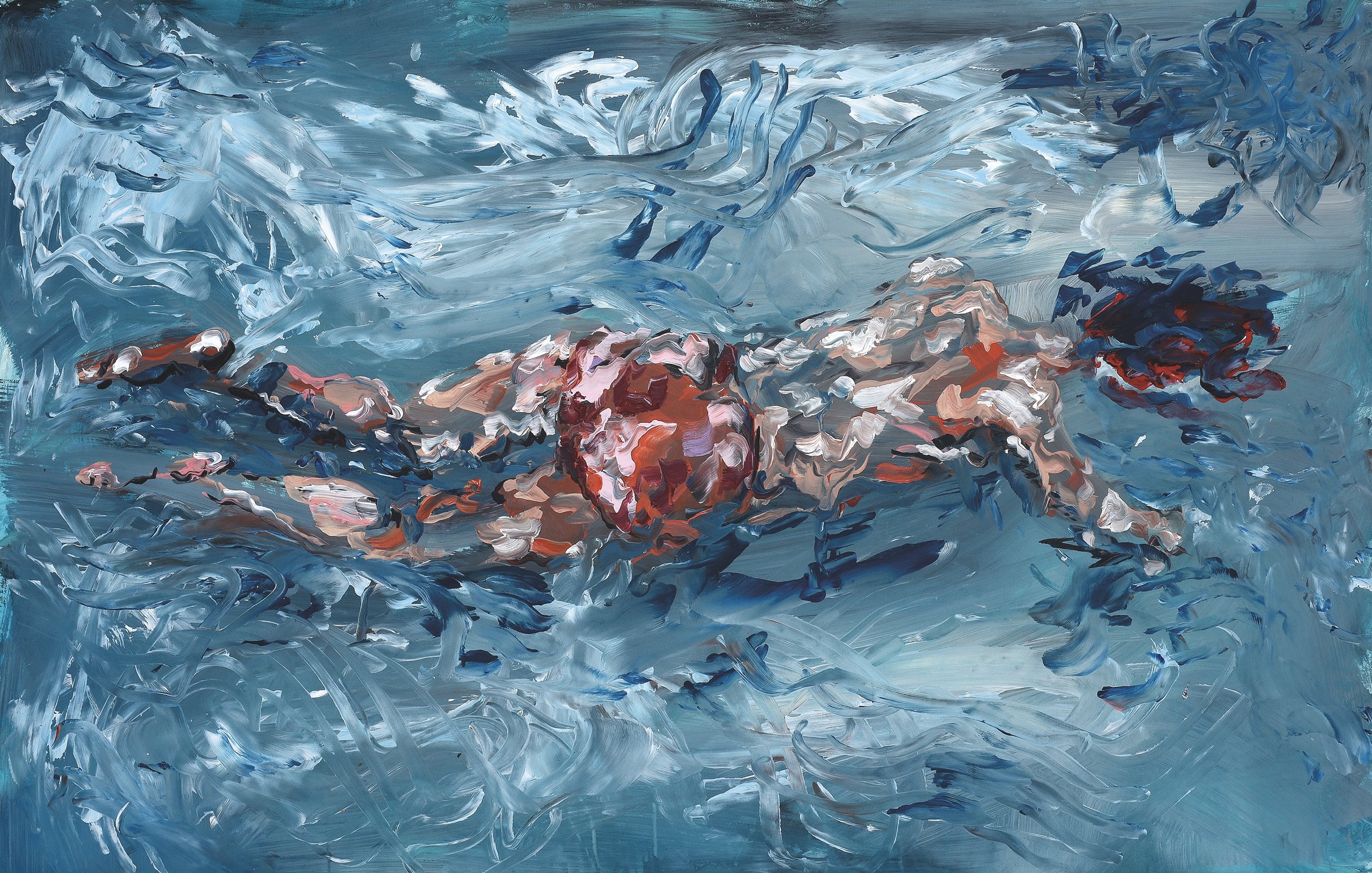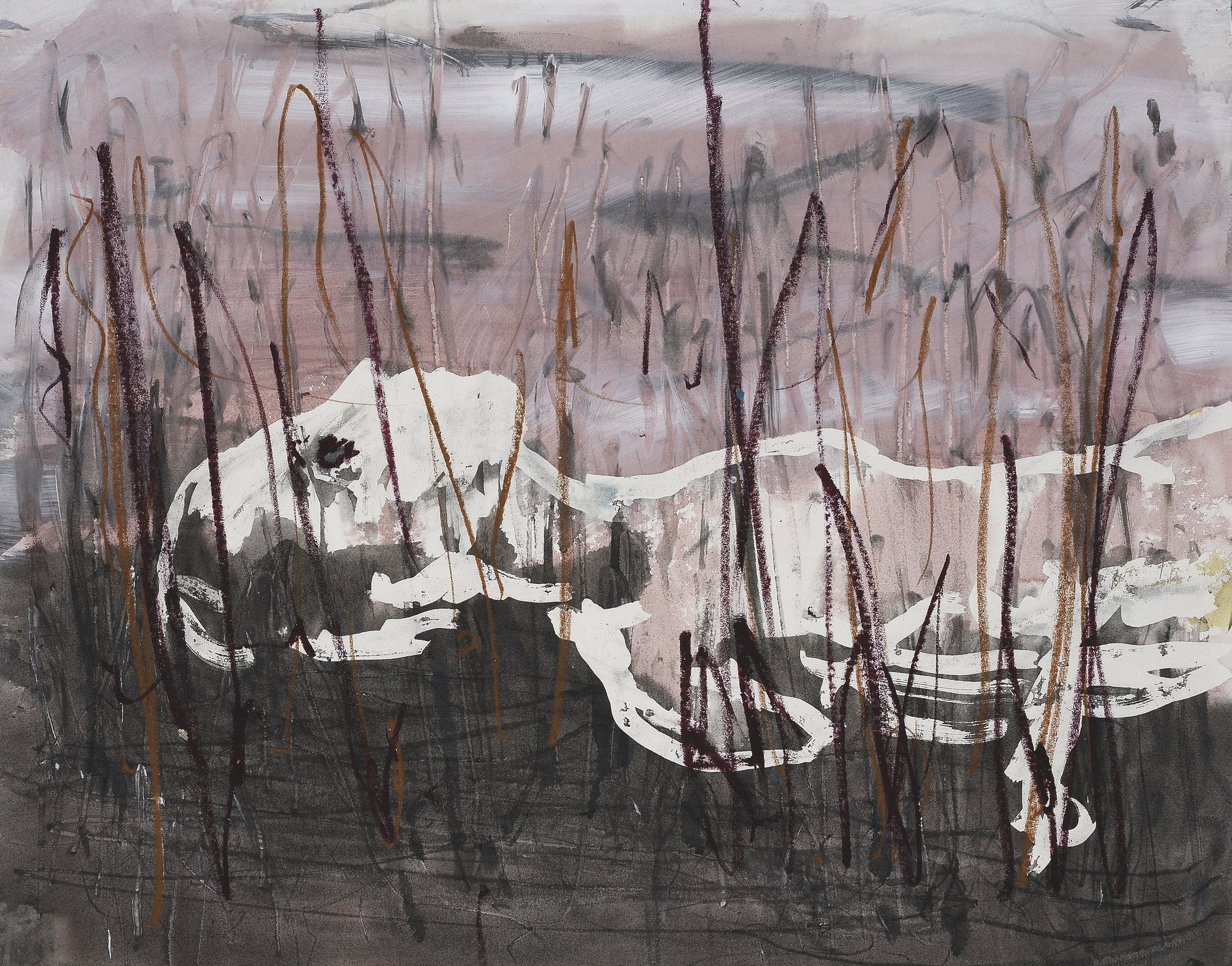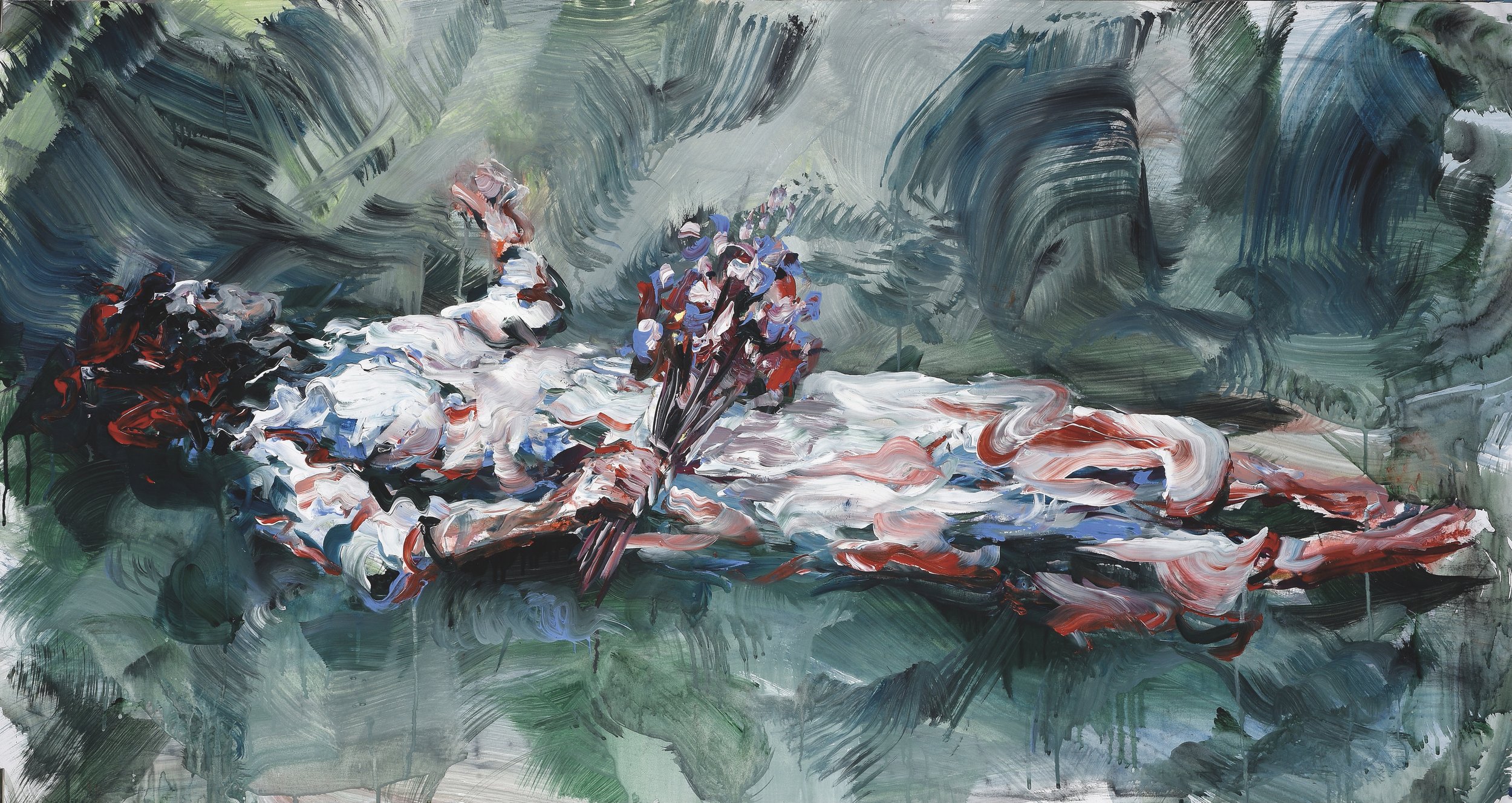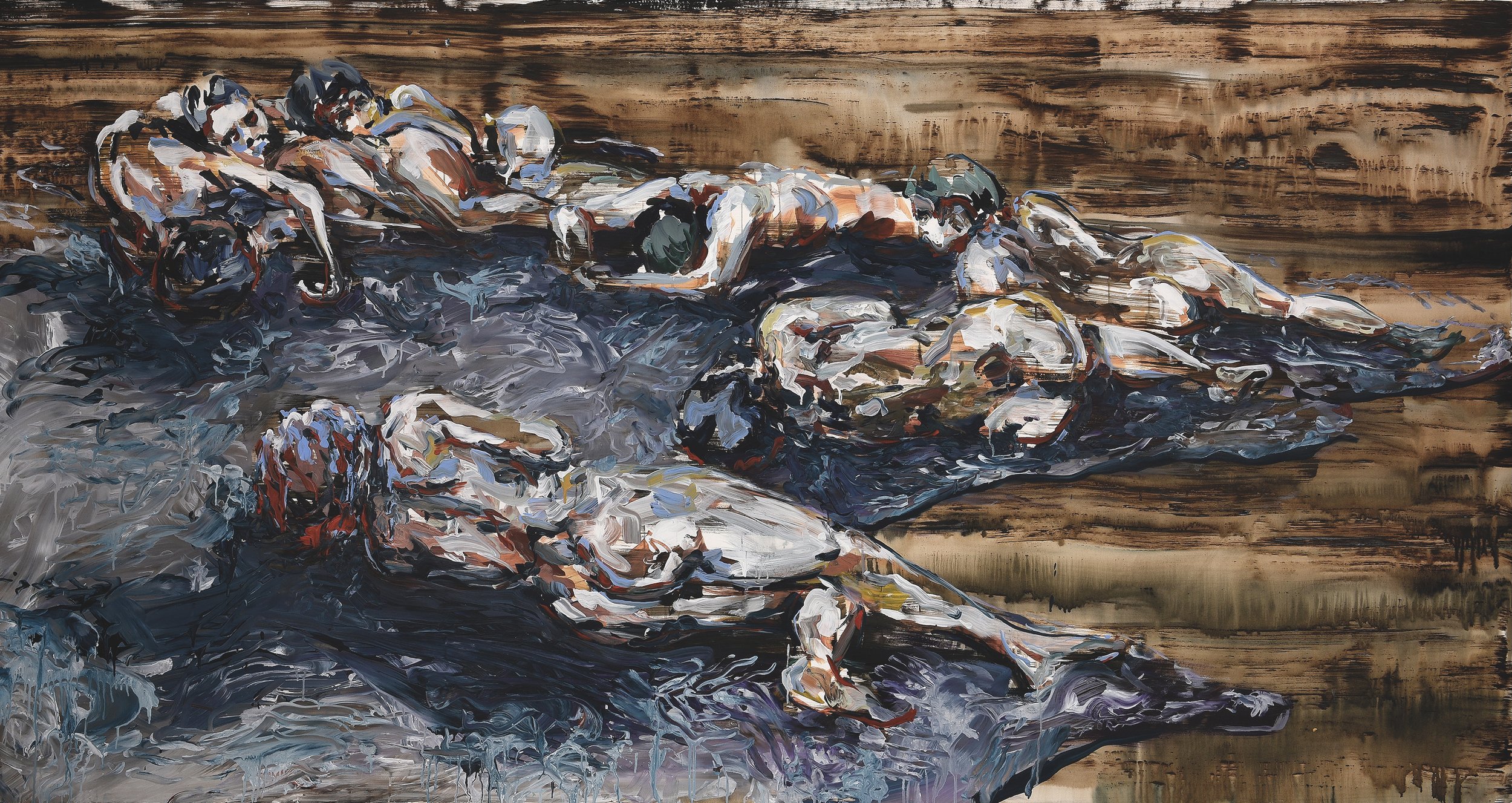Sketching archetypes
Madone, ink, pastels, aquarelle, pencils, acrylic on paper, 2022As Jung demonstrated, Clément sees archetypes as universal primordial images and ideas that have existed since the earliest times and form the basic building blocks of the human psyche and experience. They represent our shared human nature and experience across time and culture.
Through his series Urbi et orbi, Clément questions the figure of the Wise Old Man in the catholic religion, the blessing urbi et orbi dating back to the Roman Empire and being bestowed by the Pope in his role as a spiritual “father” figure to the city of Rome and the “outside world”.
From 2015 onwards he includes other Jung’s archetypes such as the anima/animus, the anima representing the feminine side of a man’s psyche and the animus the masculine side of a woman’s. He used for that the literary and poetic figures of Shakespeare’s Ophelia from Hamlet and Rimbaud’s Sleeper in the Valley. Those two characters lie in an eternal sleep, undisturbed and unchanged, in an idyllic and timeless scene of stream and flowers in stark contrast with their fatal death. Ophelia and the Sleeper in the Valley symbolize the innocence and the eternal youth against all odds.
Styx (2016), Urbi et Orbi & Ophelia and the recumbents (2015) 








